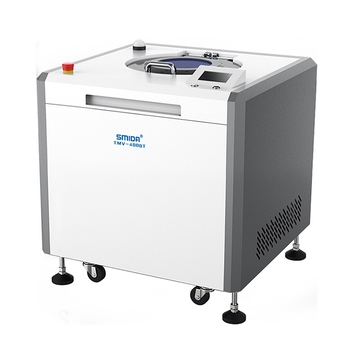Centrifugal vacuum mixers, also known as planetary centrifugal vacuum mixers, are innovative machines used in various industries for mixing and homogenizing materials. These mixers are designed to operate under a vacuum environment, which helps prevent air bubbles from forming in the mixture and ensures a more consistent final product.
Core Components
At the core of a centrifugal vacuum mixer is a rotating container, typically called a mixing bowl or mixing vessel, which is mounted on a central axis. The mixing bowl spins on its own axis while also orbiting around the central axis, creating a planetary motion. This movement allows the mixer to achieve thorough mixing and dispersing of materials, even those with varying viscosities or densities.
Vacuum Operation
The vacuum feature of centrifugal mixers is crucial for eliminating air pockets within the mixture. When mixing materials in a normal atmospheric environment, air can become trapped in the mixture, resulting in inconsistent quality and performance of the final product. By operating under a vacuum, centrifugal mixers help ensure that the mixture is free of air bubbles, resulting in a more uniform and high-quality product.
Principles of Operation
The mechanics of a centrifugal vacuum mixer rely on the principles of centrifugal force and gravitational force. The rotation of the mixing bowl creates centrifugal force, pushing the materials outward from the center of the bowl. At the same time, gravitational force pulls the materials back towards the bottom of the bowl. This combination of forces creates a kneading and shearing effect on the materials, allowing for efficient mixing and dispersion.
Operating Procedure
The operation of a centrifugal vacuum mixer is relatively simple yet highly effective. The operator loads the materials to be mixed into the mixing bowl, ensuring that the ingredients are evenly distributed. The vacuum pump is then activated to create a vacuum inside the mixing chamber, removing any air present. Once the desired vacuum level is reached, the mixing bowl is set into motion, spinning on its axis and orbiting around the central axis. The mixing process continues until the materials are thoroughly homogenized.
Versatility and Applications
Centrifugal vacuum mixers are versatile machines that can be used for a wide range of applications, including mixing powders, liquids, pastes, and viscous materials. These mixers are commonly used in industries such as pharmaceuticals, cosmetics, food and beverage, chemicals, and more. They are ideal for blending ingredients, dispersing pigments, emulsifying liquids, and achieving uniform particle size distribution.
Benefits
The benefits of using a centrifugal vacuum mixer are numerous. These mixers offer efficient and thorough mixing, resulting in a high-quality final product. The vacuum feature ensures that air bubbles are eliminated from the mixture, improving the consistency and stability of the product. Additionally, centrifugal mixers are relatively easy to operate and maintain, making them a cost-effective solution for manufacturers looking to improve their mixing processes.
Conclusion
In conclusion, understanding the mechanics of centrifugal vacuum mixers is essential for realizing their full potential in various industries. By harnessing the principles of centrifugal force and operating under a vacuum environment, these mixers offer a reliable and efficient solution for mixing and homogenizing materials. With their versatility, effectiveness, and high-quality results, centrifugal vacuum mixers have become indispensable tools for modern manufacturing processes.

